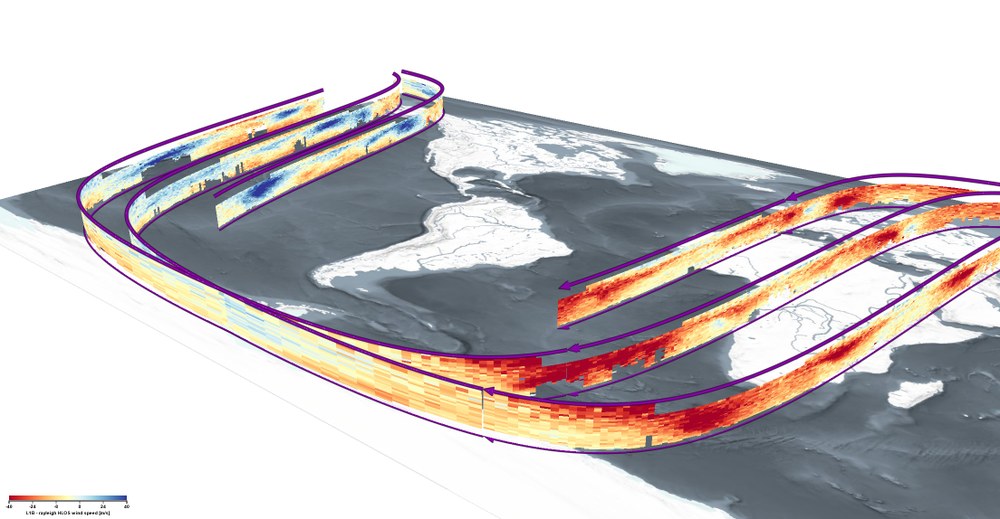Aeolus
Deriving wind velocity profiles from measurements made with a Doppler wind lidar has so far been a seldom used approach in satellite remote sensing, although the WMO (World Meteorological Organization) has clearly emphasized the significance of this parameter for understanding the earth’s global atmosphere. With ADM-Aeolus, ESA is establishing this measurement method for the first time worldwide as part of the Earth Explorer missions. The ADM-Aeolus data are to be used to derive mean wind profiles up to an altitude of 26 km at varying vertical resolutions.

The following product levels are to be taken into consideration:
- Level 1B: Horizontal Line-of-Sight (HLOS) wind profiles, processed without special correction (near-real-time products)
- Level 2A: information about aerosols and cloud layers (offline products)
- Level 2B: meteorologically relevant HLOS wind profiles based on additional corrections (scene classification, Rayleigh-Brillouin scatter effects)
- Level 2C: wind vectors which take into account ECMWF wind information at the location of the Aeolus measurements.
This Aeolus processor development is apportioned to a DLR and an ESA project.
As part of the DLR’s Aeolus project led by the Institute of Atmospheric Physics, the IMF Atmospheric Processors department is developing a DLR Level 1B prototype processor. This is being done to support ESA in optimizing the Aladin instrument. At the same time, this prototype serves to verify the operational Level 1B processor developed for the Aeolus ground segment. The first wind profiles can be derived right after the launch of Aeolus during the calibration/validation phase. The availability of a DLR prototype processor guarantees optimal flexibility in using the latest, state-of-the-art algorithms. The experience and insights gained during this work will be used later to improve the operational processor.
The Aeolus project which is being undertaken on behalf of ESA involves sensitivity studies and software verification of the operational Level 1B and Level 2A processors. This work is being carried out by a consortium consisting of CNRS/GAME, DLR, IPSL, KNMI, DoRIT and IB Reissig and includes:
- Drawing up improved software coding of the prototypes
- Providing software components for processing the Aladin calibration modes
- Providing the operational processors
- Studying the operation of both processors.
As the launch date approaches, this activity will be extended to cover aspects of in-orbit verification, calibration, and algorithm and processor maintenance.
